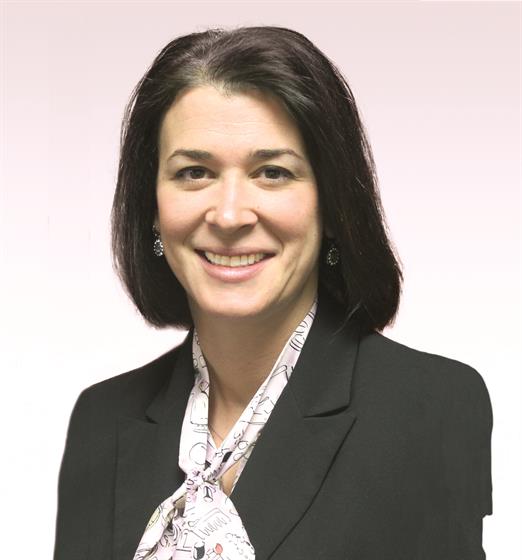
Hands-on, Practical Guidance for Educators
From math,
literacy, equity, multilingual learners, and SEL, to assessment, school counseling,
and education leadership, our books are research-based and authored by experts
on topics most relevant to what educators are facing today.
PLC+
- Grade Level: PreK-12
- ISBN: 9781544361796
- Published By: Corwin
- Year: 2019
- Page Count: 216
- Publication date: June 03, 2019
Price: $39.95
For Instructors
When you select 'request review copy', you will be redirected to Sage Publishing (our parent site) to process your request.
Description
PLC+: Better Decisions and Greater Impact by Design calls for strong and effective PLCs plus—and that plus is YOU. Until now, the PLC movement has been focused almost exclusively on students and what they were or were not learning. But keeping student learning at the forefront requires that we also recognize the vital role that you play in the equation of teaching and learning. This means that PLCs must take on two additional challenges: maximizing your individual expertise, while harnessing the power of the collaborative expertise you can develop with your peers.
PLC+ is grounded in four cross-cutting themes—a focus on equity of access and opportunity, high expectations for all students, a commitment to building individual self-efficacy and the collective efficacy of the professional learning community and effective team activation and facilitation to move from discussion to action. The PLC+ framework supports educators in considering five essential questions as they work together to improve student learning:
- Where are we going?
- Where are we now?
- How do we move learning forward?
- What did we learn today?
- Who benefited and who did not benefit?
The PLC+ framework leads educators to question practices as well as outcomes. It broadens the focus on student learning to encompass educational equity and teaching efficacy, and, in doing so, it leads educators to plan and implement learning communities that maximize individual expertise while harnessing the power of collaborative efficacy.
Key features
This book is about developing strong and effective PLCs, but this challenge is impossible without the next part of the story—the plus: supporting teachers in knowing what to do in the context of individual and collective efficacy, expectations, equity and the facilitation of learning, both for students and for staff. We hold the following beliefs about the structure and function of teams as they work collaboratively to improve student learning:
- We must keep the equity of access and opportunity to learn at the forefront of each PLC+ collaborative team meeting.
- We must ensure that the dialogue provoked by the five questions is facilitated in such a way that the work of the PLC+ is not hindered or impeded.
- We must develop learning experiences that make our expectations for learning clear to all students.
The collaborative work of the PLC+ should leverage teachers’ individual efficacy into collective teacher efficacy. Honoring each of these beliefs requires deliberate practice and intentionality. In the following chapters we address how PLC’s can address each of the five guiding questions that drive the work:
- Where are we going?
- Where are we now?
- How do we move learning forward?
- What did we learn today?
- Who benefited and who did not benefit?
But before we engage in these questions, we need to take a moment and consider the ingredients that make up a strong PLC.
Author(s)

Douglas Fisher
Douglas Fisher is professor and chair of educational leadership at San Diego State University and a leader at Health Sciences High and Middle College. Previously, Doug was an early intervention teacher and elementary school educator. He is a credentialed teacher and leader in California. In 2022, he was inducted into the Reading Hall of Fame by the Literacy Research Association. He has published widely on literacy, quality instruction, and assessment, as well as books such as Welcome to Teaching, PLC+, Teaching Students to Drive their Learning, and Student Assessment: Better Evidence, Better Decisions, Better Learning.

Nancy Frey
Nancy Frey is professor of educational leadership at San Diego State University and a leader at Health Sciences High and Middle College. Previously, Nancy was a teacher, academic coach, and central office resource coordinator in Florida. She is a credentialed special educator, reading specialist, and administrator in California. She is a member of the International Literacy Association’s Literacy Research Panel. She has published widely on literacy, quality instruction, and assessment, as well as books such as The Artificial Intelligences Playbook, How Scaffolding Works, How Teams Work, and The Vocabulary Playbook.

John Taylor Almarode
Continuing his collaborative work with colleagues on what works best in teaching and learning, How Tutoring Works, Visible Learning in Early Childhood, and How Learning Works, all with Corwin Press, were released in 2021.

Karen T. Flories
Karen Flories was the Executive Director of Educational Services for 5 years and Director of Literacy and Social Studies for 2 years with Valley View School District in Illinois, after serving as the English Department Chair for Romeoville High School. Karen’s classroom experience includes high school English, special education, and alternative education. Karen holds credentials in general education, special education, and educational leadership. She earned her master’s degree in educational leadership from Concordia University. During her time at the district level, Karen led the implementation of Visible Learning+, specifically focusing on teacher clarity, classroom assessment, and feedback. Karen is the co-author of The PLC+ Activator’s Guide, PLC+: Better Decisions and Greater Impact by Design, and The PLC+ Playbook, Grades K-12. She is currently a full-time professional learning consultant for Corwin.

Dave Nagel
Dave Nagel, MsED, is an international educational consultant and researcher. Dave began his educational career as a middle school science and high school biology teacher. His administrative experiences involved middle school assistant principal, high school associate principal, and director of extended day and credit-recovery programs. He was honored numerous times as a ‘Senior Choice’ winner, where graduating seniors selected him as someone who dramatically affected their life in a positive way. Dave has credentials in school leadership and secondary science teaching as well as a master of science degree from Butler University. Dave is the author of Effective Grading Practices for Secondary Teachers and the co-author of The PLC+ Activator’s Guide and PLC+: A Playbook for Instructional Leaders.
Table of Contents
List of Videos
About the Authors
Acknowledgments
INTRODUCTION
So What Is a PLC?
The Story Behind PLCs
Adding the Examination of Teaching Practice to the PLC Story
The Five Key Questions
What You Will Find in This Book
1. PLC+: The Plus Is YOU
Teacher Credibility and Efficacy: The Foundation of the Strong PLC+
Facilitating Collaboration: Making the Plus Count
Building Collective Efficacy
The Hope for the PLC+
Conclusion
2. Question 1: Where Are We Going?
The Story Behind the Question
A PLC+ Team in Action
Analyzing the Standard(s)/Curriculum Expectations
The Role of Teacher Clarity in “Where Are We Going?”
Developing Learning Intentions and Success Criteria
It’s Not Just High School English
Moving Beyond a Single Day
Autonomy in Teaching
The Professional Learning of a PLC+
Conclusion
3. Question 2: Where Are We Now?
The Story Behind the Question
A PLC+ Team in Action
Deficit Thinking
Initial Assessments
Analyzing for Equity Gaps
Data Collection
Data Analysis Protocols
Addressing Bias in Data Collection and Analysis
Identifying the Common Challenge
Conclusion
4. Question 3: How Do We Move Learning Forward?
The Story Behind the Question
A PLC+ Team in Action
Evidence-Based Instructional Practices
Assignment Analysis
Compensatory and Adaptive Approaches
Moving Teacher Learning Forward
Learning Walks
Using Microteaching to Improve Teaching and Learning
Conclusion
5. Question 4: What Did We Learn Today?
The Story Behind the Question
A PLC+ Team in Action
Reflection
Expert Noticing
Common Assessments as Triggers for Reflection
Determining Impact of Instruction
Progress Versus Achievement
Conclusion
6. Question 5: Who Benefited and Who Did Not Benefit?
The Story Behind the Question
A PLC+ Team in Action
Equity Audit
Response to Intervention
Universal Screening and Ongoing Assessment
High-Quality Tier 1 Instruction
Supplemental and Intensive Interventions
Meeting the Needs of All Learners
The Professional Learning of PLC+
Conclusion
7. The Next Question in the PLC+ Framework
After the Fifth Question
Beyond a Single PLC+
References
Index
For Instructors
When you select 'request review copy', you will be redirected to Sage Publishing (our parent site) to process your request.
Related Professional Learning
Related Signature ServicesRelated Institutes
- 2024 Annual PLC+ Conference
- PLC+ Activator's Guide Virtual Institute
- PLC+ Certification
- PLC+ Virtual Certification
- PLC+ Virtual Institute
Related Webinars
Related Resources
- Access to companion resources is available with the purchase of this book.
- An Introduction to the PLC+ Framework [Video]
- Leveraging PLCs for Equity [Podcast]
- PLC+ Learning Walks [Lessons and strategies]
- Teacher Collective Credibility and Efficacy [Lessons and strategies]
- The Hope for PLC+ [Lessons and strategies]

